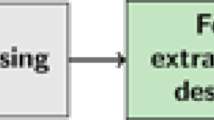Abstract
The deposit of DNA samples of wild plants that correspond to voucher specimens is highly informative and greatly enhances the value of the herbarium specimens. The Society of Himalayan Botany (SHB), Tokyo, has assembled general collections of flowering plants of the Sino-Himalayan region for more than 40 years. In a trial of the collection of these types of bioresources for use in basic research, we adopted FTA cards, which have recently been used for large-scale collection of DNA of humans, microorganisms and viruses, for the general collection of DNA samples of wild plants during a botanical expedition in Mustang, Nepal, in 2003. Three hundred and fifty-five plant specimens from Mustang, Nepal, were collected along with the corresponding DNA samples. Examination of the quality of the DNA samples by PCR demonstrated the utility of the collection system. The identification of all of the specimens collected, as well as data from the specimens, will be presented on the Flora of Nepal Database website (http://ti.um.u-tokyo.ac.jp/default.htm), which is open to the public. The DNA resources will be identified on the website and distributed openly by the SHB to researchers worldwide for basic research.


Similar content being viewed by others
References
Akiyama S, Ohba H (2004) Systematics of Himalayan seed plants. Prog Bot 65:897–410
Douzery EJP, Pridgeon AM, Kores P, Linde HP, Kurzweil H, Chase MW (1999) Molecular phylogenetics of diseae (Orchidaceae): a contribution from nuclear ribosomal ITS sequences. Am J Bot 86:887–899
Forrest SW, Kupferschmid TD, Hendrickson BC, Judkins T, Petersen DJ, Scholl T (2004) Two rare novel polymorphisms in the D8S1179 and D13S317 markers and method to mitigate their impact on human identification. Croat Med J 45:457–460
Iokawa Y, Yonekura, K (2004) Japan-Nepal botanical expedition to upper Mustang, central Nepal in 2003. Newslett Him Bot 33:1–6
Kanai H (2002) History of cooperation in botanical research between Japan and Nepal in the first two decades since 1960. In: Noshiro S, Rajbhandari KR (eds) Himalayan botany in the twentieth and twenty-first centuries. Society of Himalayan Botany, Tokyo, pp 6–16
Lampel KA, Dyer D, Kornegay L, Orlandi PA (2004) Detection of Bacillus spores using PCR and FTA filters J. Food Prot 67:1036–1038
Li CC, Beck IA, Seidel KD, Frenkel LA (2004) Persistence of human immunodeficiency virus type 1 subtype B DNA in dried-blood samples on FTA filter paper. J Clin Microbiol 42:3847–3849
Lin JJ, Fleming R, Kuo J, Matthews BF, Saunders JA (2000) Detection of plant genes using a rapid, nonorganic DNA purification method. Biotech 28:346–350
Mishler BD (2000) Deep phylogenetic relationships among “plants” and their implications for classification. Taxon 49:661–683
Ohba H (2002) Three epochs of Himalayan botany and prospects for this century. In: Noshiro S, Rajbhandari KR (eds) Himalayan botany in the twentieth and twenty-first centuries. Society of Himalayan Botany, Tokyo, pp 30–71
Prance GT (2001) Discovering the plant world. Taxon 50:345–359
Subrungruang I, Mungthin M, Chavalitshewinkoon-Petmitr P, Rangsin R, Naaglor T, Leelayoova S (2004) Evaluation of DNA extraction and PCR methods for detection of Enterocytozoon bienuesi in stool specimens. J Clin Microbiol 42:3490–3494
Tsukaya H (2003) A simple method for collecting DNA samples in the field. Newslett Him Bot 32:15–17
Tsukaya H (2004) Gene flow between Impatiens radicans and I. javensis (Balsaminaceae) in Gunung Pangrango, central Java, Indonesia. Am J Bot 91:2119–2123
Tsukaya H, Fukuda T, Yokoyama J (2003) Hybridization and introgression between Callicarpa japonica and C. mollis (Verbenaceae) in central Japan, as inferred from nuclear and chloroplast DNA sequences. Mol Ecol 12:3003–3011
White TJ, Bruns T, Lee S, Taylor J (1990) Amplification and direct sequencing of fungal ribosomal RNA genes for phylogenetics. In: Innis M, Gelfand D, Sninsky J, White T (eds) PCR protocols: a guide to methods and applications. Academic, San Diego, pp 315–322
Acknowledgements
The authors wish to give special thanks to the following colleagues who assisted in the botanical expedition in the field: Dr. T. Miyazaki (University of Tokyo, Japan), Dr. K. Yonekura (Tohoku University, Japan), Dr. Y. Ibaragi (Tokushima Prefectural Museum, Japan), and Dr. R.K. Uprety (Ministry of Forest and Soil Conservation, Nepal). The Mustang botanical expedition was carried out as a cooperative project between the Department of Plant Resources, Nepal, and the Department of Botany, University Museum, University of Tokyo, Japan. This study was supported by a grant from the Midori-ikusei-Zaidan, the SOKENDAI group research project from the Graduate University for Advanced Studies, and a Grant-in-Aid from the Ministry of Education, Science, and Culture, Japan and the Japan Society for the Promotion of Science.
Author information
Authors and Affiliations
Corresponding author
Rights and permissions
About this article
Cite this article
Tsukaya, H., Iokawa, Y., Kondo, M. et al. Large-scale general collection of wild-plant DNA in Mustang, Nepal. J Plant Res 118, 57–60 (2005). https://doi.org/10.1007/s10265-005-0196-4
Received:
Accepted:
Published:
Issue Date:
DOI: https://doi.org/10.1007/s10265-005-0196-4




